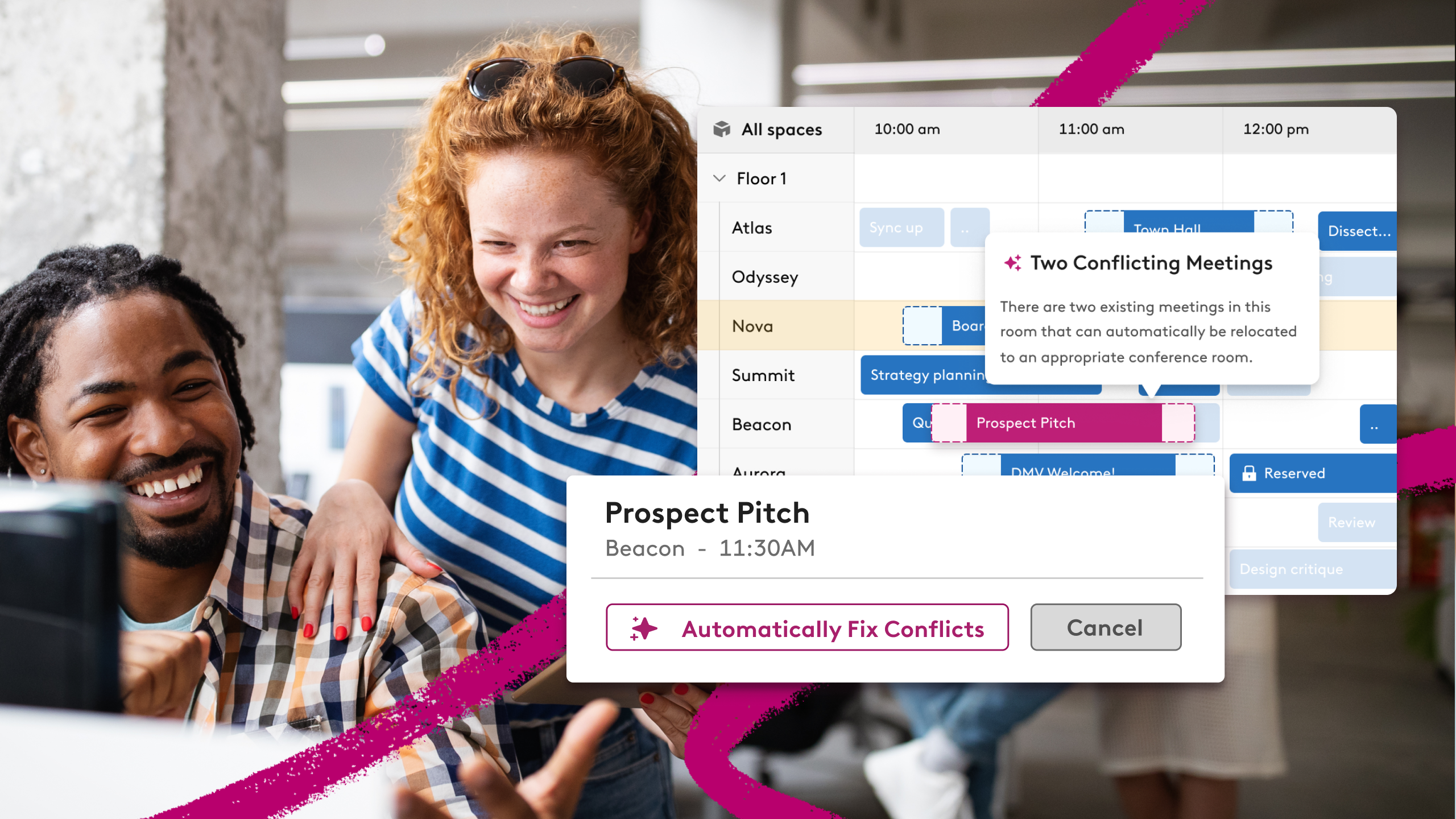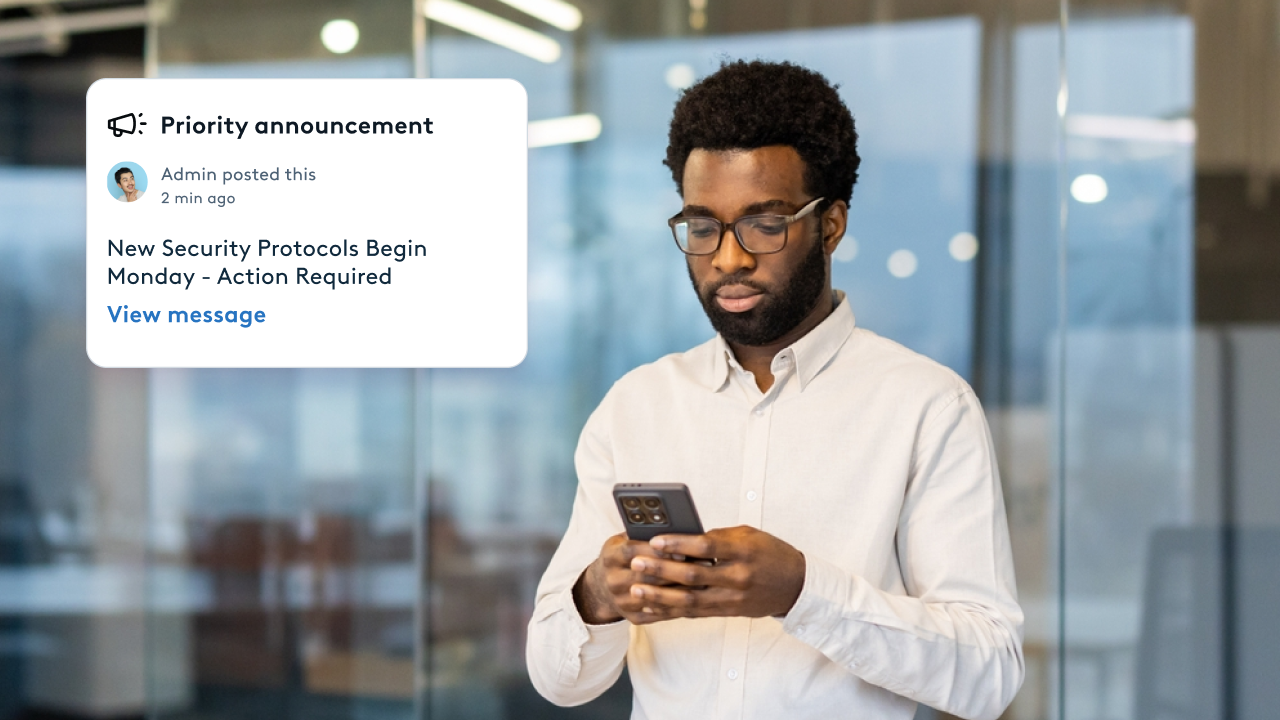How to Get IT and Workplace Teams on The Same Page

In the hybrid era, the biggest office problem is no longer about getting people to return to office, it's broken systems. We recently held a webinar panel discussion with Brian Muse, Robin’s CTO and Co-Founder, and Ciara Peter, our Senior Vice President of Product, to get insider tips on how to smooth over core functions.
The root of this friction? Too many tools, too little visibility, and no clear owner.
We can all agree that modern workplace operations are inherently complex. And when IT and workplace teams aren’t aligned, the result is a scattered tech stack, clunky workflows, and an office experience that makes people wonder why they showed up in the first place.
Hybrid work has rewritten everyone’s job description. Workplace managers are dealing with devices. IT teams are fielding room setup complaints. Both are on the hook for improving office ROI, and neither has the full picture.
Robin helps bridge the gap between departments with one platform for managing the modern office—backed by data, not guesswork. But solving for systems isn’t just about software, it also requires thinking like one team.
Successful, Flexible Offices Depend on Alignment
You can’t build a better workplace experience if the people responsible for it are working in silos. But that’s exactly what happens when IT and workplace ops bring different goals, tools, and KPIs to the table.
We’ve seen it play out again and again: IT focuses on reducing complexity and consolidating systems. Workplace teams focus on boosting engagement and improving the day-to-day experience. Both priorities matter, but without shared ownership, hybrid strategies stall.

At VHB, IT and workplace leaders avoided that pitfall by aligning early. They came to the table with a shared platform and a shared plan. The IT Operations team and Workplace Strategy and Operations team collaborated on implementation and messaging, making sure everyone from interns to executives understood what was coming and why.
The end goal with Robin for Dale and his team was to avoid getting too caught up in the details like: "Hey, Steve sits here instead of here," and, "We have someone coming into the office tomorrow. Can we book this desk?"
“Ultimately, I wanted to get the IT team out of the day-to-day management and put it in the hands of the local office admins and the local managing directors of the offices,” explained Dale Arnt, Director of IT Service Management at VHB.
The takeaway? When both teams shared a strategy, not just a software license, success was possible.
Clean Up Your Tech Stack to Measure What Matters
Most workplace tech stacks weren’t built, they just happened. Over time, different departments adopted different systems to solve their own problems: one for booking desks, another for checking in visitors, another for signage. It worked, until it didn’t.
Now, those fragmented systems create more problems than they solve: constant context switching, duplicate data, mismatched metrics, and an employee experience that feels clunky and inconsistent.
In our most recent webinar, Robin’s CTO and Co-founder Brian Muse calls the current state of workplace tech “a beautiful mess of systems.” Beautiful, because offices are in an era of rapidly adopting workplace tech that actually supports flexible work. A mess, because those systems often don’t talk to each other, creating more problems than they solve.
.webp)
That disconnect extends to how success is measured. IT teams look at uptime and support tickets. Workplace teams track attendance and bookings. But if everyone’s measuring something different, how do you know what’s actually working?
Centralizing the platforms respective teams work from and understanding what datapoints they rely on ensures everyone is operating from a shared source of truth. It’s not about picking one department’s system over another’s. It’s about giving both sides the visibility they need to make smarter, more comprehensive decisions faster.
A single platform means fewer workarounds, fewer dropped tickets, and more alignment across the board, creating a more enjoyable system from executives to employees on the ground.
Treat The Office Like a Product
Turning insights into action is critical; the best hybrid offices aren’t set-it-and-forget-it. Try thinking like a product team.
Start with a testable hypothesis. For example, converting underused meeting rooms into collaboration lounges. Gather data before and after, survey employees, measure engagement, then repeat.
Maybe your front desk process is slow. Maybe your employees can’t find open spaces easily. Maybe service requests are stuck in someone’s inbox. Every one of those is a problem that can be solved efficiently and effectively with the right tools.
🧠 Time for a mindset shift: When you evolve from reactive, quick fixes to proactive, purposeful changes, tolerable offices become vibrant ones.
The Future of The Office Isn’t Just about The Office
When IT and workplace ops act as partners the result is a workplace that actually works. For everyone.
That means:
- Shared goals, not departmental checklists
- A tech stack that supports the work, not just the systems
- A focus on the experience, not just the infrastructure
Robin gives both teams a shared language, a single source of truth, and the tools to make office decisions with confidence. Interested in learning more? Let’s chat about our plan to get your teams on the same page.













